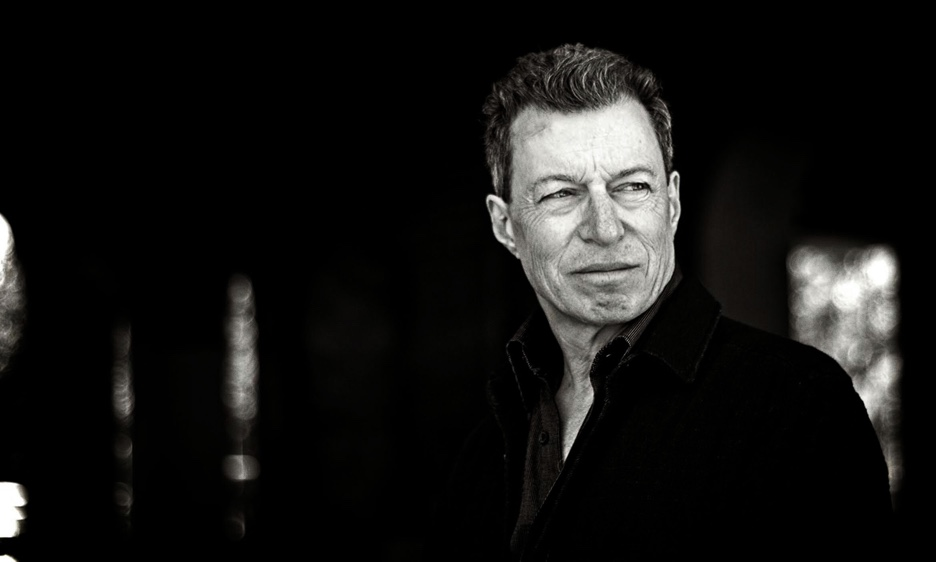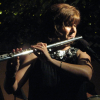Home » Jazz Articles » Live Review » Dan Siegel at MiraCosta College
Dan Siegel at MiraCosta College

The fifth song found the band really getting their legs under them, with a powerhouse display of 1990s-era fusion revival.
MiraCosta College Concert Hall
Oceanside, CA
October 20, 2023
An old maxim of business is to under-promise and over-deliver. By that measure, pianist Dan Siegel's show at the MiraCosta College Concert Hall in Oceanside, Calif., was a massive success.
The show was simply billed as The Dan Siegel Band, which barely hinted at the one-off lineup he assembled for the 10-song show on the campus where he's taught for more than two decades.
Generally consigned by online guides to the "smooth jazz" category, Siegel's music—he's issued some two dozen releases as leader since his 1980s debut—has always taken in a much broader swath than that dismissive description implies.
It was only upon arriving at the venue, and scanning the QR code to get the evening's program as a PDF, that attendees realized the caliber of players Siegel engaged for the evening.
Allen Hinds (Randy Crawford, Patti Austin, Stevie Wonder) played electric guitar, Darryl Williams (Jeff Lorber, Paul Jackson Jr) a five-string electric bass, and Frank Fluker (Euge Groove) was on drums.
As Siegel explained in a few comments to the audience before the first song, he hadn't played with Williams in about 15 years, and had only met Fluker for the first time at a rehearsal the day before.
True to Siegel's cautionary aside to the crowd that several of the songs were new compositions being performed for the first time, and that this lineup had never played together before, the first couple of songs were a bit rough around the edges.
They opened with "Sphere," the title track of Siegel's 2009 release on M&I Records—and a song, Siegel explained, inspired by Thelonious Monk (whose middle name was Sphere). Fluker and Williams laid down a percolating funk backbeat, while Siegel—on the Yamaha grand—and Hinds alternated on lead. It was a nice if not particularly noteworthy bit of fusion until Siegel pivoted to a Roland RD-2000, the beat picked up, and Hinds began bending notes on guitar.
The second track Siegel introduced as a new one, written since the release of his most recent album, the self-released Faraway Place (2021), "Mind's Eye." Siegel opened with a restrained lead on the Roland before Fluker began to gently tap out a rhythm behind him.
It was on the fourth song, "Across the Sea," from his 2006 release Departure, that the band began to gel. Fluker and Williams had locked in on the rhythm, while Hinds was offering intricate fills and little figures on guitar behind Sigel's confident keyboard work.
The fifth song, which Siegel introduced only as "an old shuffle" (the set list contained on the QR code having obviously been abandoned by that point), found the band really getting their legs under them, with a powerhouse display of 1990s-era fusion revival which featured muscular riffs and traded solos with the players building on what the previous solo had laid out, and adding to it. At one point Williams and Hinds were furiously trading 4-bar solos, circling each other, focused on each other, while Siegel at his keyboards watched with a huge smile.
For the sixth and seventh songs, the band was augmented by tenor saxophonist Steve Torok (Pete Escovedo, Brian Bromberg), a MiraCosta faculty colleague of Siegel. For the first song as a quintet, the opening was a dual lead with Torok and Hinds playing in unison. Once Torok ran with the lead, Hinds continued to complement him, while Torok explored the upper register of his tenor sax, sounding more like an alto.
On the second and final tune as a quintet, Torok took the opening verse, before handing it off to Hinds, who then riffed an extended solo with long, sinuous improvisational leads punctuated with bursts of musical exclamations. Torok then took his own extended solo on sax, building and building it, until the whole unit took it to a thundering crescendo.
This particular lineup may never play together again—but on that song, they became a band.
Back to a quartet, the group closed out with three more tracks—fully in the moment at this point, capturing the energy of the audience and each other. Hinds was playing shimmering leads, bending his notes both on the fretboard and with his whammy bar, plucking his strings far up the neck to get a different sound, running a few glissandos down practically the entire neck. It was often ethereal, and several times recalled the late Allan Holdsworth, who for many years lived only a few miles from the venue.
Meanwhile, Williams began taking some lead passages on his five-string bass, and his solos grew in both virtuosity and confidence as the band continued to gel. He was popping staccato runs on the bass, rapidly alternating between laying out the melody and variations on the high end, while also matching Fluke's rhythms with his thumb on the low end.
Fluke was rock-solid all night, equally adept and comfortable with the brushes, or riding the rim of the snare or tom, knowing exactly when to tickle the cymbals.
Siegel never really tried to take the spotlight—outside of the fact that the band was playing his compositions, and it was his name on the bill. He assembled this lineup, and was directing traffic from his piano bench. But he seemed happiest on stage when the other players were laying into some highly virtuosic takes on his songs. He did take a few solos— always measured, always thoughtful—but it felt like his real instrument on this night was the band he'd put together.
And for this one night, that was one heck of an instrument.
Tags
Live Review
Dan Siegel
Jim Trageser
DL Media
United States
California
San Diego
Allen Hinds
Randy Crawford
Patti Austin
Stevie Wonder
Jeff Lorber
Paul Jackson Jr.
Frank Fluker
euge groove
Pete Escovedo
Brian Bromberg
Allan Holdsworth
PREVIOUS / NEXT
Support All About Jazz
 All About Jazz has been a pillar of jazz since 1995, championing it as an art form and, more importantly, supporting the musicians who make it. Our enduring commitment has made "AAJ" one of the most culturally important websites of its kind, read by hundreds of thousands of fans, musicians and industry figures every month.
All About Jazz has been a pillar of jazz since 1995, championing it as an art form and, more importantly, supporting the musicians who make it. Our enduring commitment has made "AAJ" one of the most culturally important websites of its kind, read by hundreds of thousands of fans, musicians and industry figures every month.




























